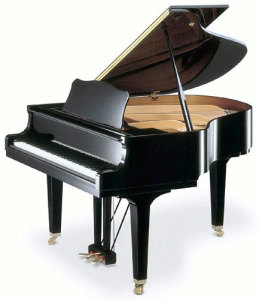Exciting Congregational Playing
Congregational playing if done properly, takes ALOT of energy!
Ever feel totally wiped out after congregational playing? If so, you’re doing something right! 🙂
I’ve heard a couple of approaches to teaching exciting congregational playing…first is to play VERY loud the whole time with no room for emotion vs. play with a big sound but leave room for emotion. Shelly Hamilton refers to this second method as “kneading” into the keys for music quality…you can “dig” into the keys for a big sound-just not banging…to allow room for emotion. Shelly mentions playing with “back” weight. After trying the above methods…I prefer the latter way….much more enjoyable; adds warmth…more meaningful way of playing and the congregation responds well to this method!
The church pianist is to provide support to the congregational singing. Play with gusto! Give solid sounding introductions. Make it sound like you know what you’re doing! 🙂 *It may help to bracket off the section(s) you play for intros in your hymnal or other songbook… so you won’t get lost.
Energetic playing is contagious! Your congregation will catch on real quick!
Video Example:
Tags: church pianist, congregational playing, exciting congregational playing

These are good comments. I definitely prefer the second method by Shelly Hamilton also. I was taught to play with emotion. Not bang on the piano! It brings the words and message of the song to life. I get comments all the time from my church members that they like how I play the songs. They say they can follow me easily. They say also that the words of the song truly spoke to them. Congregational piano playing definitely is tiring but,when it touches the heart, it’s worth it.
Could you do a video to demonstrate, Jenifer?
Yes, I plan to do just that 🙂 I’ll try to post video this week. Thanks for suggestion.
Beautiful as always! Is this arrangement in your congregational colection?
No..it was just spontaneous for the recording…sorry 🙁
I do try to create written arrangements from hearing me play something but very tricky to do after the fact.
It’s much easier for me to write as I create along the way.
This is great, thanks. Along the same lines as your advice on “kneading”, I’ve heard one tip which, although obvious, really helped me improve on playing loud parts lyrically. To play them well, there needs to be a variation of dynamics within each line, and you have to pick out the emphasis notes within the melody and vary the dynamics accordingly. So many pianists have a variation in dynamics on the softer parts, but they just play the loud parts one even loudness.
Good point!